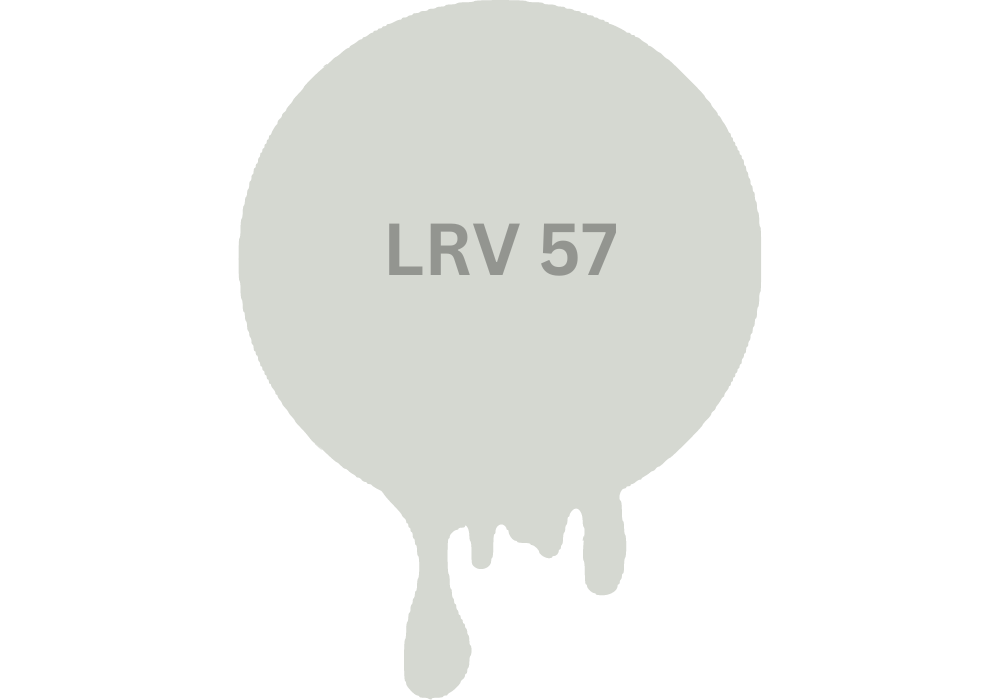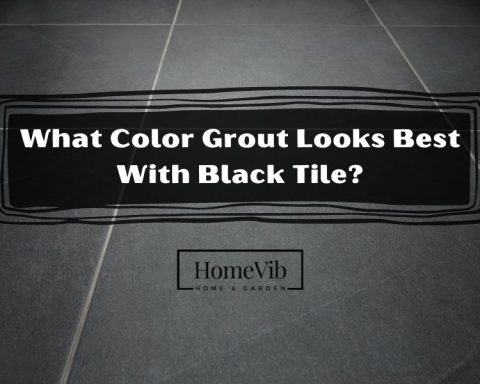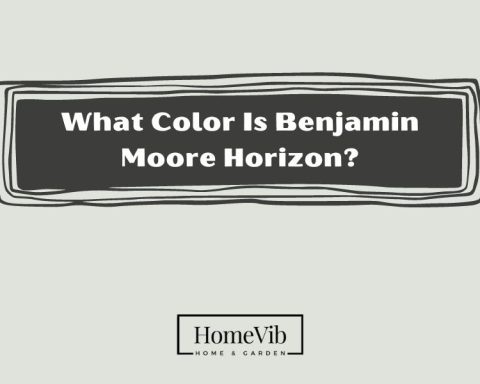Benjamin Moore’s Wickham Gray can be described as a cool gray color due to its blue undertone. This distinct characteristic distinguishes it from warm grays, which typically have yellow or red undertones.
Wickham Gray’s calm tone can create a soothing and relaxing atmosphere, and its versatility complements warm and cool color schemes.
What Color Is Benjamin Moore Wickham Gray?

Benjamin Moore’s Wickham Gray is a paint color that has garnered much attention in the design world due to its versatility and calming effect. It is widely regarded as a cool gray color, which means it has blue or green undertones as opposed to warm grays with yellow or red undertones.
What makes Wickham Gray unique is its specific shade of blue undertone that gives it a calm tone yet does not overwhelm a room. This blue undertone adds depth and dimension to the gray color, providing a soft, soothing hue that creates a relaxed and welcoming atmosphere.
Wickham Gray is a popular interior and exterior design choice because it complements warm and cool color schemes. Its cool undertones can subtly contrast warm colors like red and orange, while its muted nature can harmonize with cool colors like blue and green.
Wickham Gray’s color can vary depending on lighting conditions, which means it can appear lighter or darker depending on the time of day.
Is Benjamin Moore Wickham Gray Warm Or Cool?
Benjamin Moore’s Wickham Gray is a paint color that has become increasingly popular among homeowners and interior designers. To answer this question, we must look at the undertones in color.
Undertones are the colors present within a particular hue but are not always immediately apparent. These undertones give the paint its unique character and can make it warm or cool.
Benjamin Moore’s Wickham Gray is a cool gray color due to its blue undertone. This unique shade adds a calm and tranquil vibe to any space and can be paired with warm and cool colors to create a balanced look.
The dark shade in color makes Wickham Gray a popular choice for those seeking a sophisticated and elegant design.
Cool grays have blue, green, or purple undertones, while warm grays have yellow, red, or brown undertones. Wickham Gray’s blue undertone gives it a cool, calming appearance that works well in various design settings.
The blue undertone in Wickham Gray is subtle but noticeable, making this shade unique. It is not a pure gray color but a complex blend of gray and blue, creating a soft and sophisticated look.
It allows Wickham Gray to be paired with a wide range of other colors, making it a good choice for any design scheme.
Colors That Goes With Benjamin Moore Wickham Gray
When choosing a paint color for your home or any other space, it can be overwhelming to decide, especially considering factors such as lighting and furniture.
Benjamin Moore’s Wickham Gray is a popular paint color choice that many homeowners choose for its versatility and calming effect.
By selecting the right complementary colors, you can create a cohesive and stylish look that enhances the overall aesthetic of your space. Here are eight colors that go well with Benjamin Moore’s Wickham Gray:
1. Behr Ashen Tan
Behr Ashen Tan is a warm neutral color that pairs well with Benjamin Moore Wickham Gray. Ashen Tan is a mid-tone beige with yellow undertones that add warmth to any space.
When paired with Wickham Gray, it creates a cozy and inviting atmosphere. The combination of Ashen Tan and Wickham Gray is perfect for living or dining rooms.
Ashen Tan is an excellent color for the walls, providing a soft and subtle background that allows. To complement the warm tones of Ashen Tan, it’s best to choose accessories in similar shades.
Natural materials like wood, leather, and woven fabrics add texture and warmth to the space. Soft, warm lighting can also enhance the cozy atmosphere created by the Ashen Tan and Wickham Gray combination.
2. Benjamin Moore Stonington Gray
Stonington Gray is versatile neutral that pairs well with various colors, including Wickham Gray. When used together, the two colors create a serene and sophisticated look.
This color has a slightly cool undertone, which works well with the cool undertones in Wickham Gray. Stonington Gray is an excellent choice for a living room or home office as it creates a serene and sophisticated ambiance.
3. Sherwin Williams Passive
Passive is a cool gray that pairs well with the cool tones in Wickham Gray. When used together, these colors create a soft and soothing ambiance perfect for a bathroom or bedroom.
This color creates a soothing effect and works well in a bathroom or bedroom. Passive also pairs well with warm wood tones or pops of bright colors, such as yellow or orange.
For example, if you want to add a pop of color to a room with these two grays, you could add accents in warm, earthy tones like rust, terracotta, or mustard yellow.
4. Sherwin Williams Mindful Gray
Mindful Gray is a warm gray color that has beige undertones. This color pairs well with Wickham Gray as an accent, adding warmth and depth to the space.
Mindful Gray works well in a bedroom or home office and pairs well with warm neutrals, such as beige or taupe. The two colors complement each other beautifully and create a cozy and welcoming vibe when used together in a bedroom or home office.
5. Behr Seagull Gray
Seagull Gray is a light gray color with blue undertones that pair well with the blue undertones in Wickham Gray. This color creates a fresh and clean look and works well in a bathroom or laundry room.
Seagull Gray also pairs well with other shades of blue or green and pops of bright colors, such as coral or yellow. Together, these colors create a crisp and refreshing look that is perfect for a space where you want to create a clean and bright atmosphere.
What Number Is Wickham Gray Benjamin Moore?
When selecting paint colors for a project, having access to the specific codes for each color can be incredibly helpful. Benjamin Moore’s Wickham Gray is a paint color with the code HC-171.
This code uniquely identifies the color within Benjamin Moore’s extensive color system. It is used by professionals in the painting and design industries to ensure consistency and accuracy when working with colors.
You can use it to match or coordinate colors with this specific shade. For example, if you’re looking for a complementary color alongside Wickham Gray, you can use the code to find other colors in Benjamin Moore’s system that work well together.
What Is The LRV Of Benjamin Moore Wickham Gray?

The Light Reflectance Value (LRV) is a numerical measure of how much light a paint color reflects. It ranges from 0, which is pure black, to 100, which is pure white.
The LRV of Benjamin Moore’s Wickham Gray is 57. This means that the color reflects slightly more than half of the light that falls on it, making it a mid-range color in light reflection. This LRV value makes it popular for weak and dark spaces since it works well in both.
Knowing the LRV of color can be helpful for various reasons, from selecting colors for a room with specific lighting conditions to ensuring that a color meets accessibility requirements.
Colors with lower LRVs, such as darker colors, tend to absorb more light, making a room feel cozier and more intimate. On the other hand, colors with higher LRVs, such as lighter colors, reflect light and can make a room feel larger and more open.
With an LRV of 57, Wickham Gray falls in the middle of this range, making it a versatile color that works well in various spaces. It can create a cozy atmosphere in a bedroom or living room, bringing a sense of lightness and freshness to a kitchen or bathroom.
Additionally, its cool undertones can complement various materials, such as wood, metal, and stone.
What Are The Undertones In Wickham Gray?
Benjamin Moore’s Wickham Gray is a popular color choice due to its timeless and elegant appearance. It is a cool-toned gray, but what sets it apart is the subtle undertones that give it depth and character.
Understanding the undertones in Wickham Gray is crucial for selecting complementary colors and achieving the desired overall look in your space.
The undertones in Wickham Gray are predominantly blue and green. When viewed in bright light, the blue undertones become more prominent, giving the color a more relaxed appearance.
However, the green undertones can become more apparent in dimmer lighting, creating a more muted and calming feel. The balance of these undertones makes Wickham Gray a versatile choice for various settings, from living rooms to bedrooms and even kitchens.
Cool-toned colors like blues, greens, and purples work well with Wickham Gray and can help to enhance the cool undertones. But warmer tones like yellows and oranges can clash with the cooler tones in gray, so it’s best to avoid using these colors nearby.
When working with the undertones in Wickham Gray, consider the lighting in your space. Natural light can bring out the blue undertones, while artificial lighting may emphasize the green undertones.
Will Benjamin Moore Wickham Gray Work In My House?

Whether or not Benjamin Moore’s Wickham Gray will work in your house depends on various factors, including the existing decor and design elements, the amount of natural light in the space, and your personal preferences. Some general guidelines can help you determine whether or not Wickham Gray is a good choice for your home.
First and foremost, it’s important to note that Wickham Gray is a cool-toned gray color with subtle blue undertones. This means it works best in spaces with other cool colors, such as blue, green, or purple.
Wickham Gray may clash with the existing decor and feel out of place if your home is decorated primarily in warm colors, such as red, orange, or yellow.
Another important consideration is the amount of natural light in the space. Cool-toned colors like Wickham Gray look best in rooms with plenty of natural light, as they can appear darker and somber in dimly lit areas. If your home has limited natural light, you may want to consider a lighter, warmer shade of gray instead.
It’s essential to consider the overall style and aesthetic of your home. Wickham Gray is a sophisticated and elegant color that works well in various design styles, from traditional to modern.
If your home has a specific aesthetic, such as mid-century modern or coastal, choose a color more closely aligned with that style.
The decision to use Wickham Gray in your home is a personal one that should take into account your unique design preferences and the specific characteristics of your space.
If you’re unsure whether or not Wickham Gray is the right choice for your home, consider consulting with a professional interior designer or color consultant who can help you make an informed decision.









